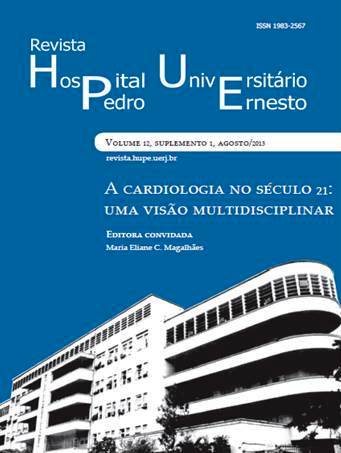Cardio-oncology Where we are?
DOI:
https://doi.org/10.12957/rhupe.2013.7087Abstract
Revista HUPE, Rio de Janeiro, 2013;12(Supl 1):93-99
doi: 10.12957/rhupe.2013.7087
Progress in the treatment of cancer patients in the last decades has resulted in increased survival of these patients, as well as in the improvement of their quality of life. It was shown that numerous anti-neoplastic agents have potential cardiotoxic by different pathophysiological mechanisms leading to heart failure syndrome.Clinical manifestations of cardiotoxicity are cardiac failure, ventricular and supraventricular arrhythmias, myocardial ischemia, asymptomatic left ventricular dysfunction, hypertension, pericarditis, and thromboembolic events.The cardiotoxicity presents as an acute, subacute or chronic. The acute or subacute cardiotoxicity characterized by manifestations usually observed from baseline to 14 days after the end of treatment. The chronic cardiotoxicity may be differentiated into two types, according to the onset of clinical symptoms. The first subtype occurs within one year after the end of chemotherapy and second generally occurs after one year after the end of chemotherapy. The most typical manifestation of cardiotoxicity is chronic ventricular systolic or diastolic dysfunction that can lead to congestive heart failure by cardiovascular death.The definitions of cardiotoxicity is based on the measurement of the ejection fraction of the left ventricle (LV).The toxicity of the various chemotherapeutic may occur early, and ventricular dysfunction on echocardiography may already be a late sign. The measurement of biomarkers such as BNP and troponin has been suggested by many authors as a means for early diagnosis of myocardial injury.The purpose of this article is to describe the mechanisms related cardiotoxicity chemotherapy, and to evaluate the methods available for early diagnosis and treatments currently proposed.
Keywords: Cardiology; Oncology; Cardiovascular disease.


